Abstract
Victims of domestic violence appeal to the health care system through emergency room visits for injuries related to violent episodes or for proxy care for other complaints. Screening for persons who are at high risk for violence or who are victims of violence has not been performed in emergency rooms when patients present for care, nor have all health care professionals been educated in the ways to ask the questions and assess the patients. The questions for identifying domestic violence victims have not been routinely asked on admission to the emergency department, and documentation of this information is not consistent. The purpose of this survey study was to identify the numbers and characteristics of adult victims of domestic violence who present to the emergency department of an urban community medical center during a 1 0-day period to estimate the extent of the domestic violence in the community served by the acute care facility. Findings demonstrated that emergency department staff had difficulty asking the questions, and the responsibility for the screening was relegated to the triage nurse. Questions were not asked of each adult presenting to the emergency department, and health care staff identified various reasons for their resistance. Although only 12% of persons were screened and only during the hours of 0700 through 1900, positive screens for physical abuse were found in 24.6% (n = 20) of the 81 women screened. Routine screening of all patients and sensitivity to the needs of those who have experienced domestic violence are integral to prevention and safety of those who are victimized. Injury prevention programs can then be instituted in the community with the collaborative efforts of local citizen groups and the health care facility.
Full text
PDF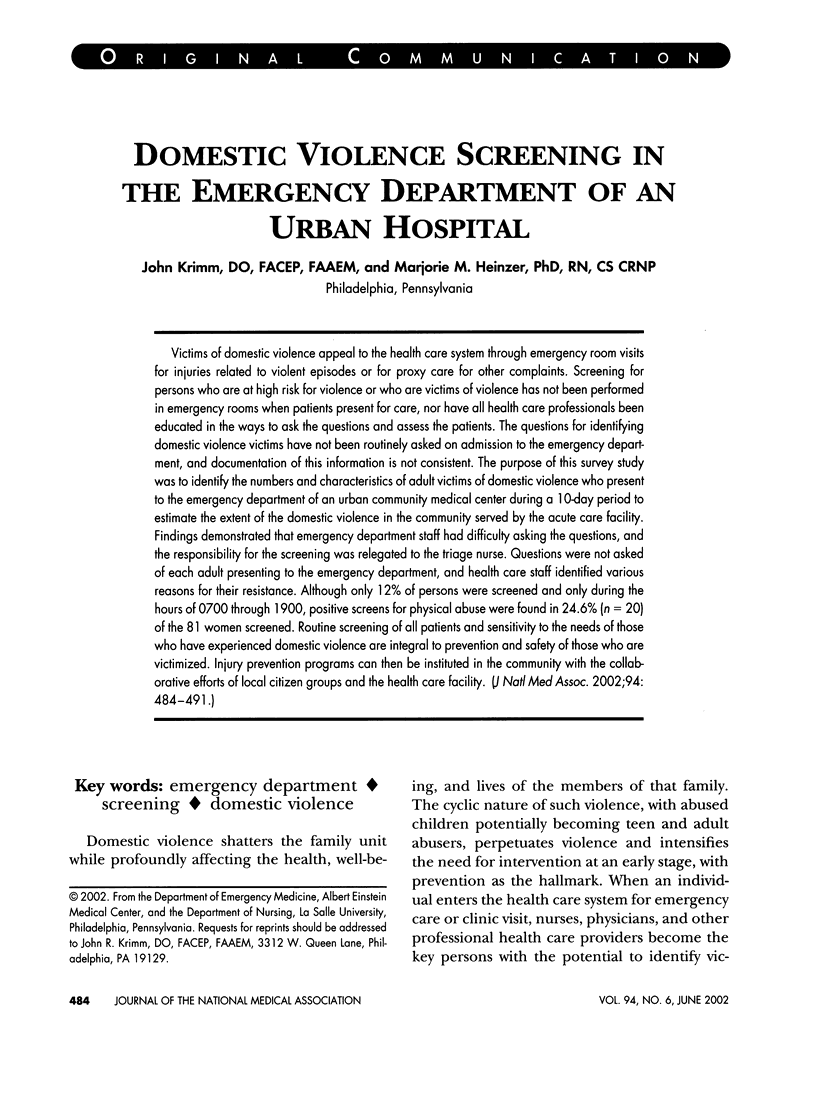
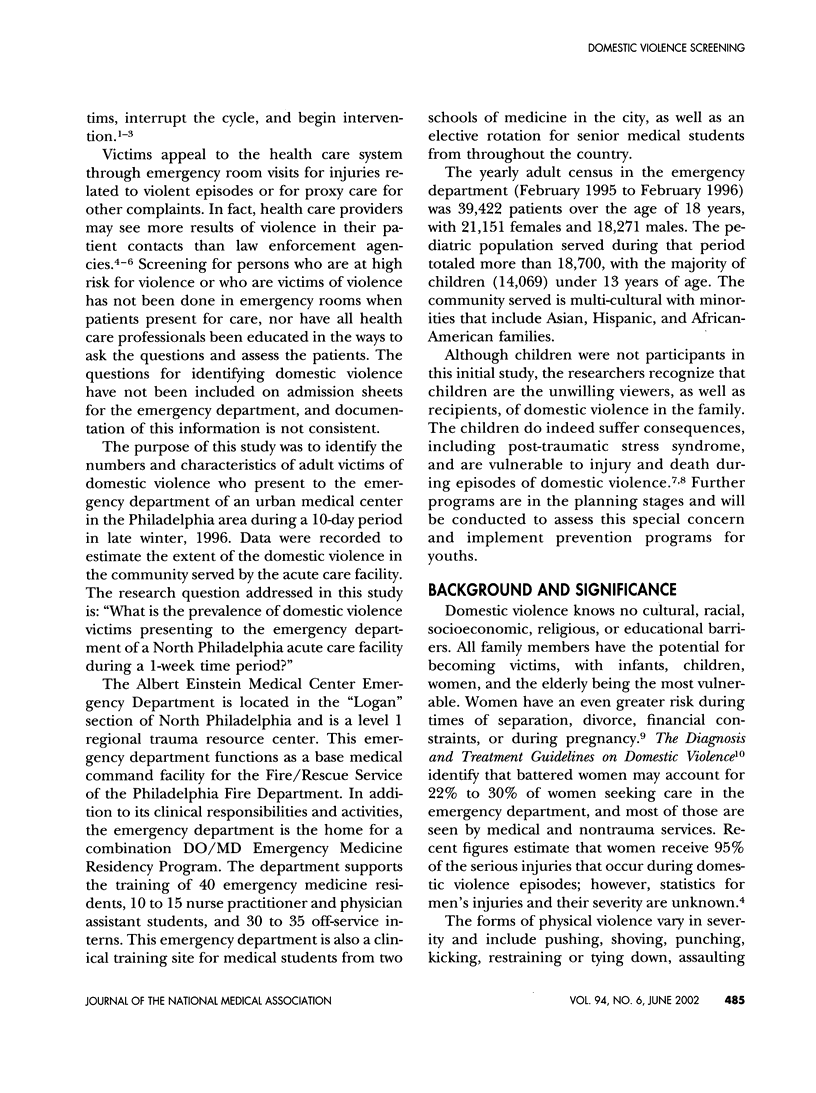
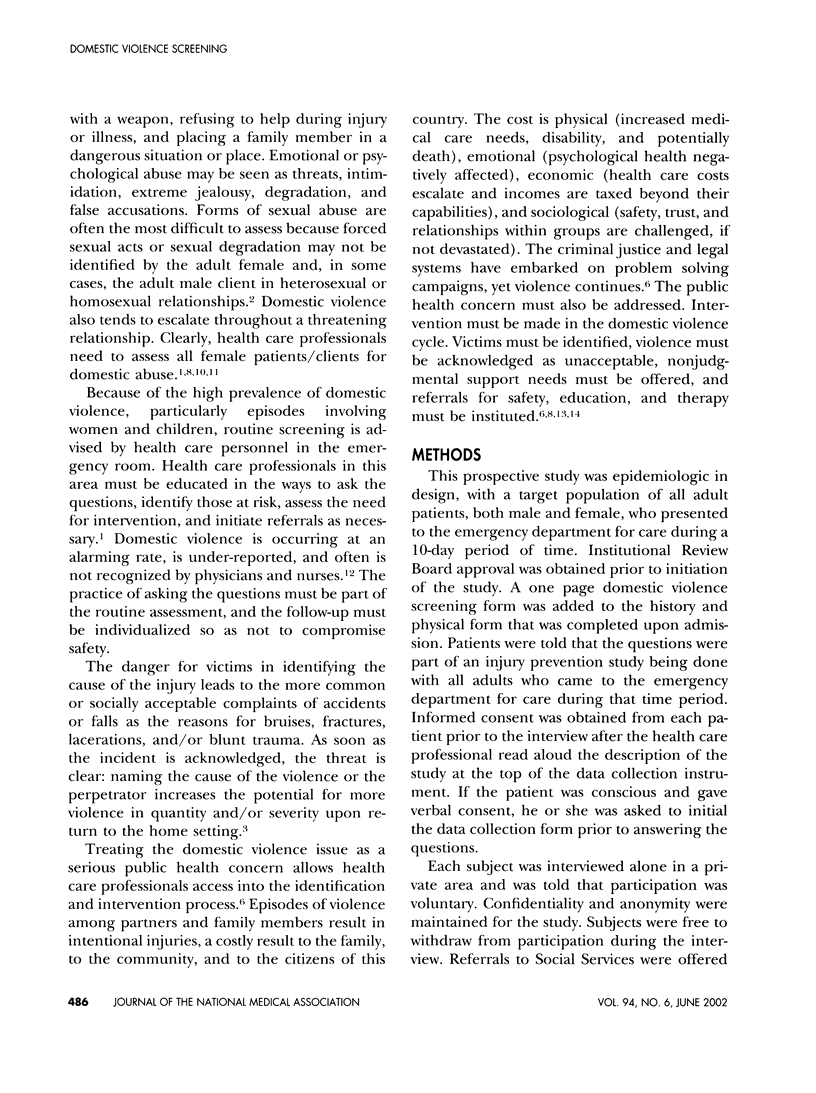
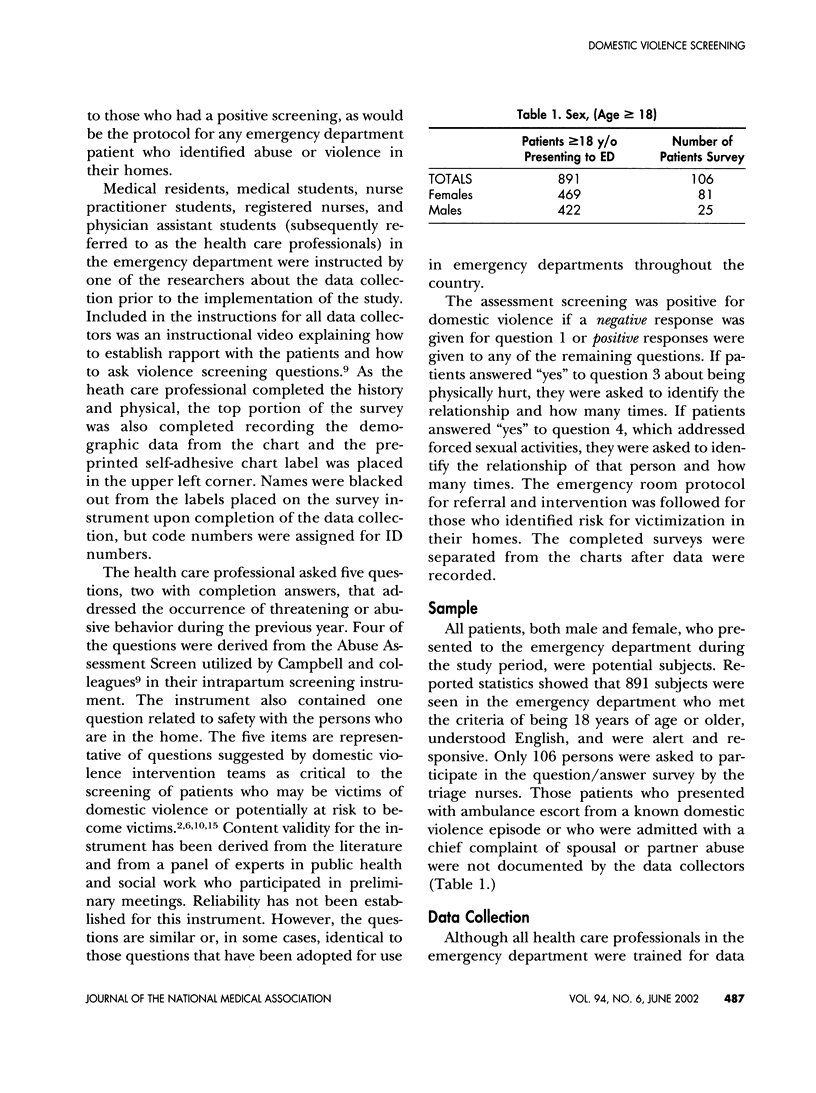


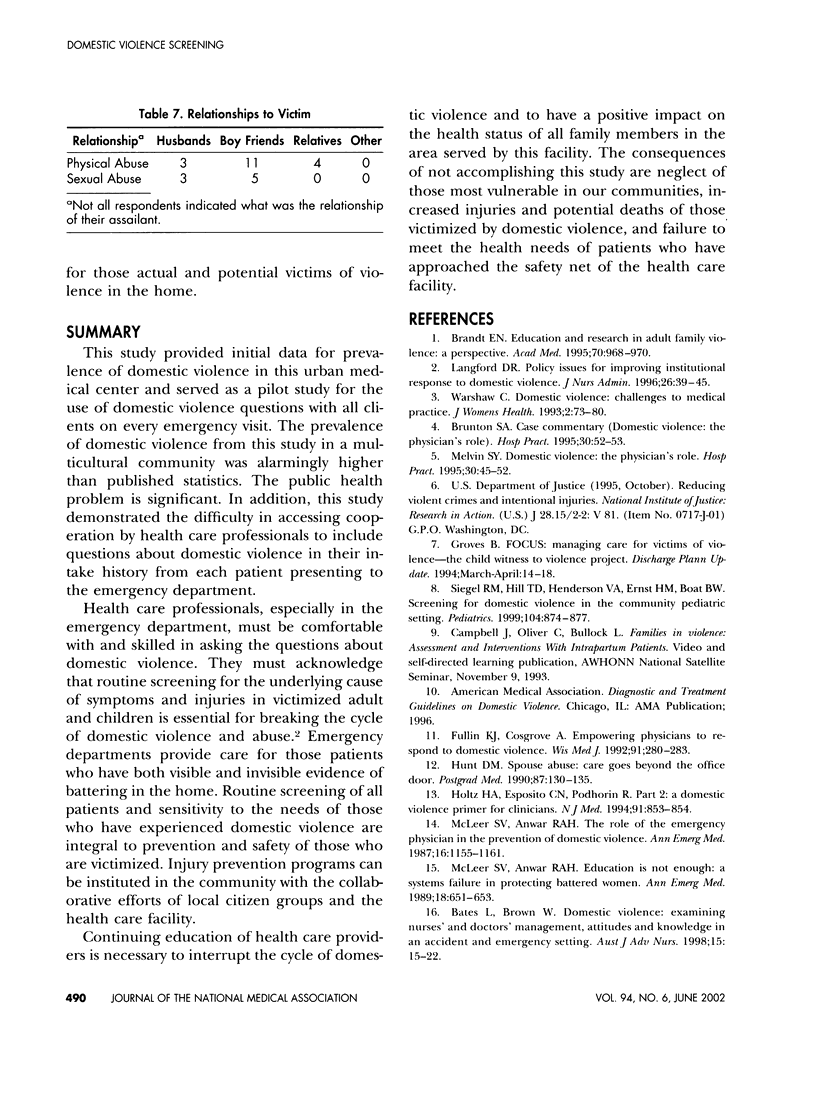

Selected References
These references are in PubMed. This may not be the complete list of references from this article.
- Bates L., Brown W. Domestic violence: examining nurses' and doctors' management, attitudes and knowledge in an accident and emergency setting. Aust J Adv Nurs. 1998 Mar-May;15(3):15–22. [PubMed] [Google Scholar]
- Brandt E. N., Jr Education and research in adult family violence: a perspective. Acad Med. 1995 Nov;70(11):968–970. doi: 10.1097/00001888-199511000-00012. [DOI] [PubMed] [Google Scholar]
- Fullin K. J., Cosgrove A. Empowering physicians to respond to domestic violence. Wis Med J. 1992 Jun;91(6):280–283. [PubMed] [Google Scholar]
- Holtz H. A., Esposito C. N., Podhorin R. A domestic violence primer for clinicians. N J Med. 1994 Dec;91(12):853–854. [PubMed] [Google Scholar]
- Hunt D. M. Spouse abuse. Care goes beyond the office door. Postgrad Med. 1990 Feb 1;87(2):130–135. doi: 10.1080/00325481.1990.11704560. [DOI] [PubMed] [Google Scholar]
- Langford D. R. Policy issues for improving institutional response to domestic violence. J Nurs Adm. 1996 Jan;26(1):39–45. doi: 10.1097/00005110-199601000-00008. [DOI] [PubMed] [Google Scholar]
- McLeer S. V., Anwar R. A., Herman S., Maquiling K. Education is not enough: a systems failure in protecting battered women. Ann Emerg Med. 1989 Jun;18(6):651–653. doi: 10.1016/s0196-0644(89)80521-9. [DOI] [PubMed] [Google Scholar]
- McLeer S. V., Anwar R. A. The role of the emergency physician in the prevention of domestic violence. Ann Emerg Med. 1987 Oct;16(10):1155–1161. doi: 10.1016/s0196-0644(87)80476-6. [DOI] [PubMed] [Google Scholar]
- Melvin S. Y. Domestic violence: the physician's role. Hosp Pract (1995) 1995 Oct 15;30(10):45–53. doi: 10.1080/21548331.1995.11443269. [DOI] [PubMed] [Google Scholar]
- Siegel R. M., Hill T. D., Henderson V. A., Ernst H. M., Boat B. W. Screening for domestic violence in the community pediatric setting. Pediatrics. 1999 Oct;104(4 Pt 1):874–877. doi: 10.1542/peds.104.4.874. [DOI] [PubMed] [Google Scholar]


